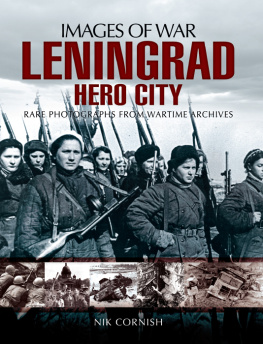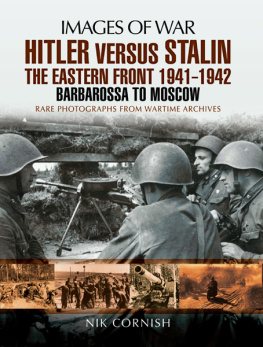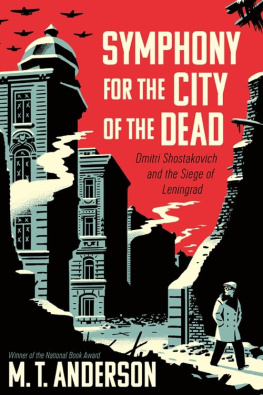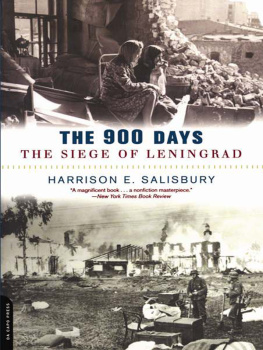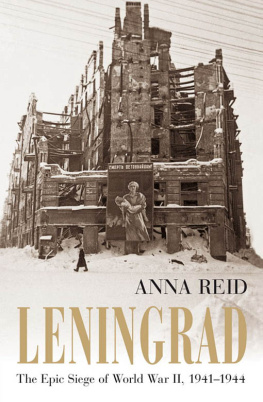
First published in Great Britain in 2011 by
PEN & SWORD MILITARY
an imprint of
Pen & Sword Books Ltd
47 Church Street
Barnsley South
Yorkshire
S70 2AS
Copyright Nik Cornish 2011
ISBN 978 1 84884 514 5
ISBN 9781844688944 (epub)
ISBN 9781844688951 (prc)
The right of Nik Cornish to be identified as Author of this Work has been asserted by him in
accordance with the Copyright, Designs and Patents Act 1988.
A CIP catalogue record for this book is available from the British Library
All rights reserved. No part of this book may be reproduced or transmitted in any form or by any means, electronic or mechanical including photocopying, recording or by any information storage and retrieval system, without permission from the Publisher in writing.
Typeset in Gill Sans by
Phoenix Typesetting, Auldgirth, Dumfriesshire
Printed and bound in England by
CPI UK
Pen & Sword Books Ltd incorporates the Imprints of Pen & Sword Aviation, Pen & Sword
Family History, Pen & Sword Maritime, Pen & Sword Military, Pen & Sword Discovery, Wharncliffe Local History, Wharncliffe True Crime, Wharncliffe Transport, Pen & Sword Select, Pen & Sword Military Classics, Leo Cooper, The Praetorian Press, Remember When, Seaforth Publishing and Frontline Publishing
For a complete list of Pen & Sword titles please contact PEN & SWORD BOOKS LIMITED 47 Church Street, Barnsley, South Yorkshire, S70 2AS, England E-mail:
Contents
First and foremost this book is dedicated to the memory of the innocent civilians, particularly the children, who suffered and died during the siege. Secondly to Dorothy (my mum), Angie the ever patient and to Charlotte, Alex and James my children, who, thank'fully, have never had to experience the suffering described in these pages. A final dedication goes to the members of the Belanovsky family who were there.
Preface
T he siege of Leningrad is one of the epic operations of the Second World War on the Eastern Front. During the 900 days that the siege officially lasted the suffering endured by the garrison and civilians within the, as the Soviets termed it, Blockaded area was almost unimaginable, particularly during the first winter.
The city of Leningrad formerly, and once again, St Petersburg was the capital of Russia from 1732 to 1918, when an earlier German offensive threatened the survival of the fledgling Soviet state and necessitated the transfer of the seat of government to Moscow.
It was Lenin's Bolshevik Party that, in November 1917, ousted the original revolutionaries of March 1917 in the city of Petrograd, as St Petersburg became in 1914, to distance it from German connections, to create the birth place of the Soviet state. It was this symbolism, coupled with the city's industrial capacity including two tank factories and several naval yards, and strategic significance its proximity to Finland, and its importance as a transport hub that drew it to Hitler's attention during the planning stages of Operation Barbarossa.
Within the confines of such a book as this it is almost impossible to do justice to the scale of the siege. Therefore, what it is intended to do is provide the general reader of military history with a heavily illustrated overview of the campaign. There are more scholarly books, such as Harrison Salisbury's 900 Days: The Siege of Leningrad, on this topic and these are commended to the reader who wishes to learn more.
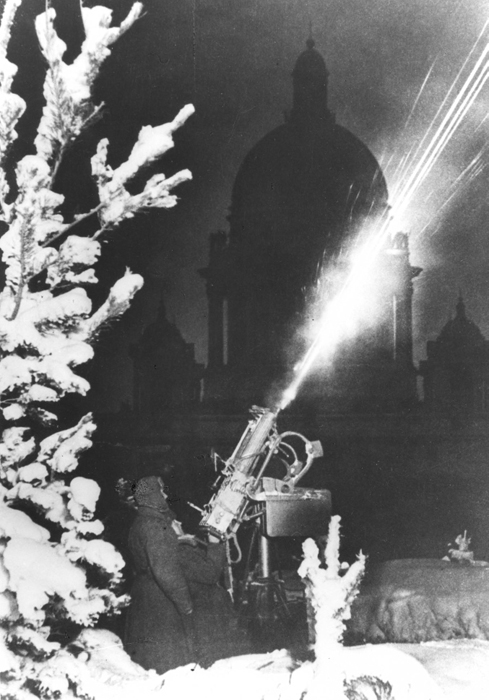
St Isaac's Cathedral silhouetted against machine-gun fire. (From the fonds of the RGAKFD at Krasnogorsk via Nik Cornish)
Introduction
T he city that became Leningrad was founded as a result of war and the ambition of Tsar Peter (the Great) to modernize his empire in 1703. It was established on the site of a former Swedish fortress at the mouth of the Neva River. By the late eighteenth century the city had expanded, although at great human cost thousands of conscripted serfs died during the years of construction carving out building plots from the marshy forests, to become the pre-eminent city of Russia.
As the imperial capital it was only natural that revolutionaries of all persuasions should gravitate towards it and the nineteenth century witnessed a burgeoning of anti-tsarist movements. However, it was the reign of Tsar Nikolas II that was finally to witness the trio of revolutions that swept the Romanov dynasty from power. Although marginalized, the revolutionaries watched and waited until, at the height of the First World War, during March 1917 the opportunity they dreamt of presented itself. Within a week the Tsar had abdicated and was replaced with a more liberal regime named the Provisional Government. However, the Provisional Government had from the outset a rival to its power namely the Petrograd Soviet, which became the body through which Lenin's Bolshevik Party stormed to power in November 1917.
With the Russian army demobilizing and the threat of a German march on the city, Lenin transferred the government to Moscow during the summer of 1918. Although threatened with capture by the anti-Bolshevik army of General Yudenitch in 1919 and the uprising of the naval garrison at Kronstadt during 1921, the city remained firmly Bolshevik and was rewarded following the death of Lenin in 1924 by being renamed Leningrad.
This coincided with the creation of the Leningrad Military District (LMD), the premier military district of the Soviet Union. In the event of war the LMD would form Northern Front, which roughly equated with a German army group. Consequently, its responsibilities included the mobilization of air, sea and ground assets as ordered by the General Staff and the People's Commissariat for Defence (NKO).
For the next decade the LMD was at the forefront of military developments, including theories of airborne assault and deep-penetration operations as outlined by the ill-fated Marshal M. N. Tukhachevsky.
When the Soviet Union went to war with Finland in November 1939 the conduct of the responsible military district, Leningrad, was appalling. The men were ill equipped, the tactics abysmal and the approach apathetic. Therefore, it was superseded by North Western Front which was disbanded at the war's end in March 1940. Shamed from its torpor by the Russo-Finnish War the Red Army strove to modernize its forces, theories and weaponry.
However, when the Baltic States were incorporated into the Soviet Union, during the spring of 1940, a new military district was created named the Baltic Special Military District (BSMD), which was in the event of war to become North Western Front. North Western Front was tasked with defending the Baltic States and therefore the western approaches to Leningrad. The LMD now became responsible for not only the territory of the Leningrad oblast (district) but the border with Finland from the Arctic Circle and the Estonian coastline. To fulfil this part of the Soviet Defence Plan for 1941 Fourteenth Army would cover the frontier from Murmansk to Lake Onega, Seventh Army the gap between lakes Onega and Ladoga and Twenty-Third Army the Karelian Isthmus land bridge to Leningrad. Consequently, in June 1941 almost all of LMD's forces were facing the Finns. The NKO's confidence in North Western Front covering Leningrad's flank was, however, sadly misplaced as events were to show.
On 22 June 1941, when the Germans unleashed Operation Barbarossa, the commander of the LMD was Lieutenant General M. M. Popov. So concerned was he about the reliability of North Western Front's abilities to protect his flank that he ordered an inspection of the district's southern and western defences. The resulting report recommended the construction of a defensive line along the course of the Luga River from Narva to Lake Ilmen.
Next page
